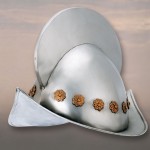Like many companies ThyssenKrupp Materials NA, parent company to the AIN Plastics Division has started to look to internal programs to help existing talent grow within the company and to help new talent find their way to TKMNA and their Divisions.
In 2012 Heather Clark, SPHR, Employee Development Manager for ThyssenKrupp Materials NA, was approached by TKMNA’s president Hans Joseph Hoss about starting a program to help TKMNA attract and develop talent both inside and outside the company. The objective was to increase tools and programs to support and develop employees, thereby strengthening the TKMNA workforce all around. Heather embraced the task and set out to
- Develop Programs to attract entry level talent
- Develop Current Employees especially in the areas of leadership development
- Attract New Talent through establishing internship programs with universities
One program that is currently benefitting AIN Plastics is TKMNA Sales Talent Development Program and just two years after it’s November 2012 launch, Ms. Clark is happy to announce TKMNA has had their first graduates from the talent program, meanwhile the second class of recent college graduates began the program in June of 2014. This year AIN Plastics jumped in whole heartedly with President John Shepherd taking on the role of Senior Executive to the program. John took a hands on approach and attended career events at several universities across the U.S. including his own Alma Mater, University of Toledo. (Read more…) John worked with ThyssenKrupp Aerospace NA’s Talent Acquisition Manager, Scott Haas who also travels to events around the U.S. to spread the word about TKMNA and to search for talent. (http://twitter.com/sghaas) Business Development Director, Richard Winter also took on a large part in the selection process for AIN Plastics Division. As a result of the TKMNA Talent Program, AIN Plastics Division brought in Rebecca (Becca) Reidy. Rebecca is a recent graduate of the University of Toledo, and like the others in the program, her interests lay in a sales based career.
Program Director, Heather Clark, noted we have many TKMNA employees move within the company throughout their careers. Two examples of current employees who have found success in growing within the TKMNA company are Shawn Lynam who began in sales, then took on the Business Development Director job for AIN Plastics. Shawn recently became the President of onlinemetals.com. Richard Winter, who has held numerous roles in the AIN Plastics Division, including Branch Manager, is now Business Development Director for AIN. Additionally, TKIS current President, Brian Diephus began in 1985 at Copper and Brass Sales. (Read More…) and the list continues. The TKMNA Talent Program is unique in that it targets people who are interested in sales oriented careers and developing their sales and leadership abilities in TKMNA. One unique feature of the program is that participants need to be able to relocate up to four times in their first year before settling in at their full time location which is determined at the conclusion of the 12 month program.
For example, AIN Plastics Talent Program employee Becca Reidy, is starting her first three months with AIN Plastics in Madison Heights, MI. From there she will spend two months at Copper and Brass Sales, Southfield, MI, two months with TKIS, then it’s onto TK Aerospace in Seattle, WA for two months. Once those are completed Becca will be placed at one of AIN Plastics thirteen locations. During her travels Becca will also complete a one year project for AIN Plastics to further her learning.
 Becca said she found the program in a search at her college, University of Toledo. She applied and completed the process this spring. Richard Winter said Becca was chosen out of five finalists who came to Detroit for the TKMNA Talent Program selection process. When asked about why she wanted to work for AIN Plastics, Becca said there were several things that came down to the atmosphere at AIN Plastics and the people as well as how she feels AIN Plastics shares her personal values. She enjoyed how friendly and professional the team is. She also noted that AIN Plastics is a company that tries to always do the right thing, and they really put an emphasis on providing good solid customer service. The program also fit her interest in a sales, or sales related career path. Since her first days with AIN Plastics Becca has enjoyed the work as well as a couple of events and one of AIN Plastics favorite Programs – AINFit. Becca, along with Trevor Drake, John Shepherd, Katie Juneau and their families took part in the recent Mt. Hope Michigan Warrior Run. See more photos on AIN Plastics Facebook. She has also been able to spend time visiting AIN Plastics Suppliers and getting to know the business of plastics distribution.
Becca said she found the program in a search at her college, University of Toledo. She applied and completed the process this spring. Richard Winter said Becca was chosen out of five finalists who came to Detroit for the TKMNA Talent Program selection process. When asked about why she wanted to work for AIN Plastics, Becca said there were several things that came down to the atmosphere at AIN Plastics and the people as well as how she feels AIN Plastics shares her personal values. She enjoyed how friendly and professional the team is. She also noted that AIN Plastics is a company that tries to always do the right thing, and they really put an emphasis on providing good solid customer service. The program also fit her interest in a sales, or sales related career path. Since her first days with AIN Plastics Becca has enjoyed the work as well as a couple of events and one of AIN Plastics favorite Programs – AINFit. Becca, along with Trevor Drake, John Shepherd, Katie Juneau and their families took part in the recent Mt. Hope Michigan Warrior Run. See more photos on AIN Plastics Facebook. She has also been able to spend time visiting AIN Plastics Suppliers and getting to know the business of plastics distribution.
Congratulations to Becca as she takes off on her first year journey to TKMNA Divisions across the country. For more information on ThyssenKrupp Materials NA, the talent programs offered, and all the Divisions please see the links below or contact Heather Clark at heather.clark@thyssenkrupp.com
See you in the blogosphere again soon!
Lisa Anderson
Marketing Manager
ThyssenKrupp Materials, NA
AIN Plastics Division
 About Lisa Anderson
About Lisa Anderson
Ms. Anderson has been ThyssenKrupp Materials AIN Plastics Division for over 2 years. She brings 20+ years of advertising, award winning graphic design, social media and marketing. She has worked in book publishing, advertising agencies, printing, manufacturing, and the apartment industry. Ms. Anderson has a Bachelor of Fine Arts in Studio Arts from Calvin College, Grand Rapids, MI.
TKMNA.com website offers information about all TKMNA Divisions and more.
To learn more about AIN Plastics visit us at tkmna.com
Keep up with AIN Plastics on your favorite social media




























